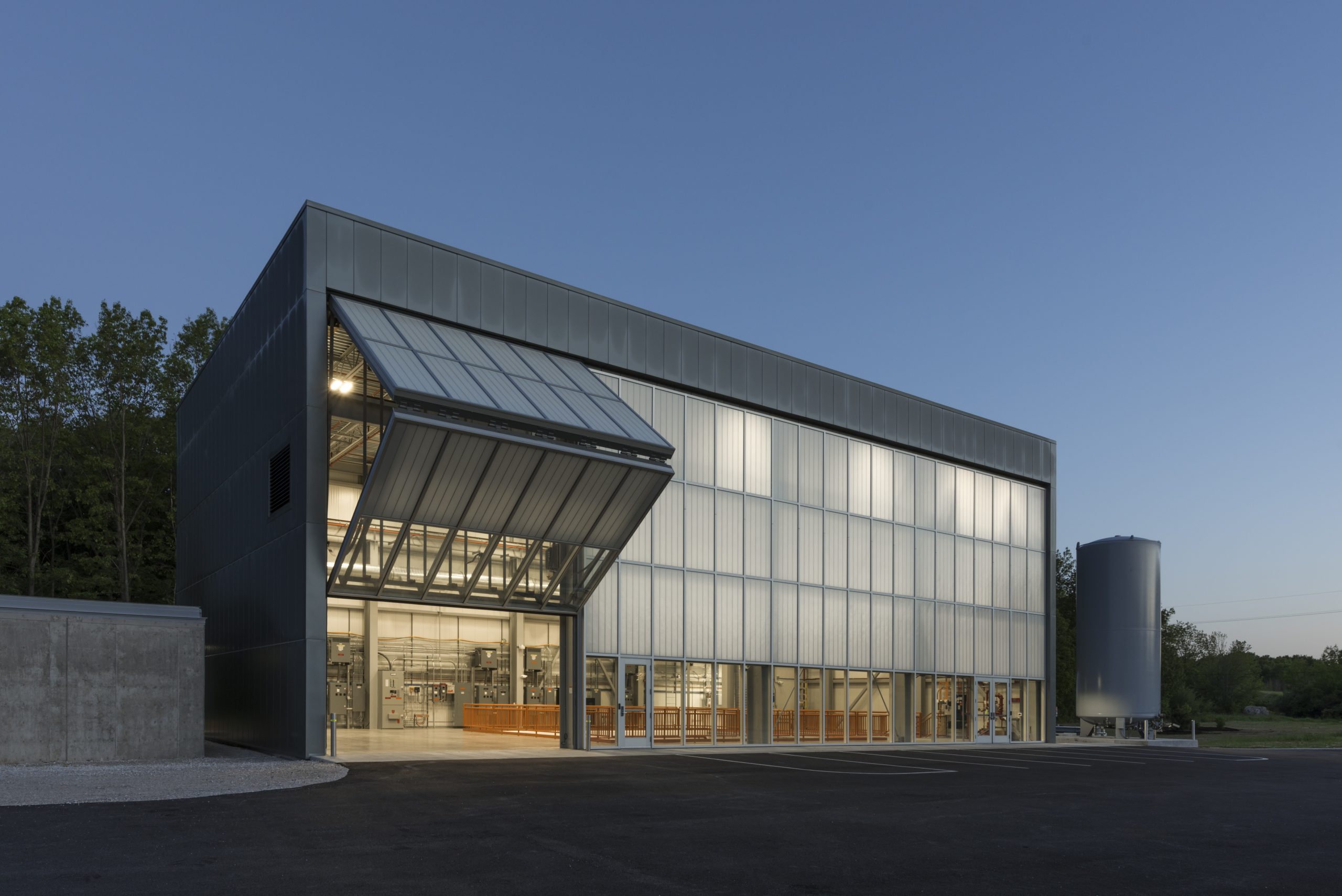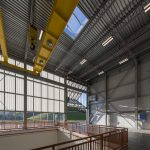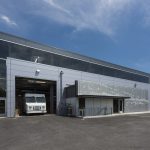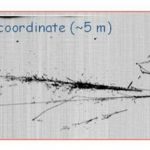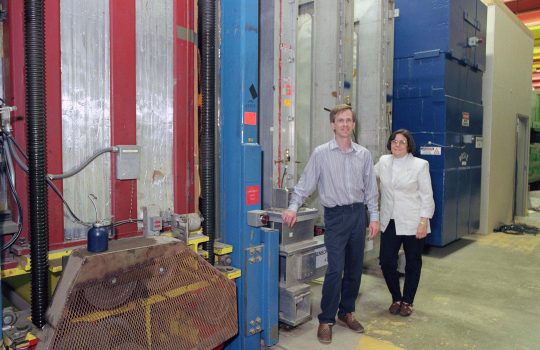Robert Wilson would be proud.
When Wilson, Fermilab’s founding director, was setting forth his plans for a new particle physics laboratory 50 years ago, he envisioned an architecturally significant built environment.
“My fantasy of a utopian laboratory clearly required a setting of environmental beauty, of architectural grandeur, of cultural splendor,” he wrote in 1987.
In 2017, Fermilab saw the completion of two new buildings for its Short-Baseline Neutrino program, striking structures that house the SBN’s neutrino detectors. The buildings were so impressive that the Association of Licensed Architects awarded Holabird & Root, the architecture firm that designed them, a Gold Award through ALA’s 2017 Design Awards Program.
The award recognized the ingenuity not only in creating highly flexible spaces to house the particle detectors, but also in incorporating visual representations of neutrino science.
“It’s easy just to make a box like a warehouse, but our collaboration has allowed us to make a space that’s much more than that,” said Fermilab’s Steve Dixon, project manager for the SBN detector buildings.
In 2015, Fermilab and Holabird & Root partnered to design and construct the buildings that would house two of the three neutrino detectors used in the SBN program.
In the planned SBN program, Fermilab will send a beam of neutrinos — subtle, mysterious subatomic particles — through three detectors, one positioned behind the other, in the path of the beam. Scientists will study the data recorded by the detectors to paint a more detailed picture of the neutrino, whose various properties have eluded precise depiction, thanks to their fleeting nature.
Holabird & Root would design buildings for the detectors called ICARUS and SBND. ICARUS was originally used in experiments at INFN’s Italian Gran Sasso laboratory. After a period of refurbishment at the European laboratory CERN, it was delivered to Fermilab, where it arrived last year. The second detector, the Short-Baseline Near Detector or SBND, is currently under construction. (The third, called MicroBooNE, is already in operation.)
Holabird & Root is a historic Chicago architectural firm renowned for their designs around the world, including the Chicago Board of Trade Building and Soldier Field in Chicago, among others. The firm has worked with Fermilab for almost 18 years on various projects and designed the SBN buildings with particle physics in mind.
“The project depended on the translation of what the scientists needed into information for the architects,” said Greg Cook, managing principal of Holabird & Root.
Holabird & Root faced a few unknowns as they entered the design process in 2015. One of the detectors was overseas, and the other wasn’t built yet. The challenge of designing houses for two detectors, both about a story high but neither of whose dimensions or weight were exactly known at the time, called for some ingenuity.
The architects at Holabird & Root cleverly filled in the blanks for the missing dimensions by designing removable exterior walls and immense exterior doorways.
The removable wall panels of the ICARUS building were designed so that the detector’s sizeable parts will have no problem gliding into the building on their move-in dates.
The SBND building features a floor-to-ceiling bifold door — a door that folds into two parts as it opens — facilitating access for SBND parts. The door folds outward, creating a larger work area inside the building and maximizing doorway space. It is perhaps most impressive feature of the SBND building, its staggering scale resembles that of a docking station for a spacecraft.
During the life of the detectors, these entrances will continue to function as access points for upgrades and new equipment.
The SBN building design also boasts accessory features such as lofty windows that let in bright light. The architects created vibrancy by bringing in carefully selected colors from the official Fermilab color palette onto cranes and electrical work, adding pops of color to an otherwise unadorned interior.
“We need to be respectful of the fact that it’s not just a lab, but a lab where many people work every day, practicing high-energy physics and are proud of the work they do,” Cook said.
The ICARUS detector building brings neutrino physics into its facade, using a pattern of perforations that display a neutrino collision in the aluminum siding. Dixon came up with the idea for the graphic based on an image from a real collision event recorded during ICARUS research in Italy. Engineers at Holabird & Root translated the design into information for a laser cutter, converting the science of the building into an artistic exterior.
“People will continue to work in the buildings for years and years, maintaining the detectors and studying the science,” Cook said.

